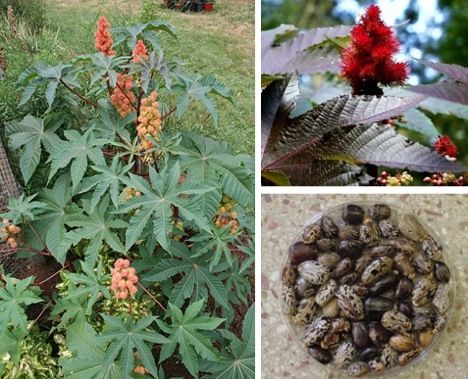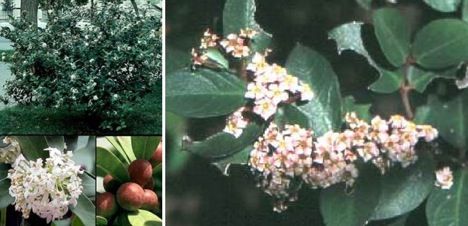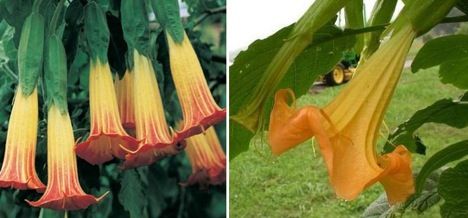|
Valentino Morrison
|
 |
« on: April 05, 2011, 01:34:03 AM » |
|
Cute Killers: 16 Unassuming-but-Lethal Poison Plant[/b]
Most plants contain some level of toxins (like alkaloids) for defense. After all, they’re plants. They can’t go anywhere. Through millennia of trial and error, both animals and human beings have figured out which plants are safe, which are lethal, and which are somewhere in between. For example, did you know that many grain-bearing plants contain a toxin known as lectins? And that the African staple, cassava, must be thoroughly boiled and soaked to separate it from its poisonous compound, cyanide? Even the humble lima bean has been bred to contain less cyanide. Cherries, potatoes, peaches and apple seeds are all toxic – eat enough of the latter, in fact, and it will prove fatal. Fortunately, artificial selection and cooking methods have all but eliminated the threat of toxins in everyday foods. But you may be surprised to find out the incredibly lethal plants often hanging around the neighborhood park – or gracing your tabletop in the form of a centerpiece.
Castor Bean Images via UCC, My Sunshine Garden and remarc Images via UCC, My Sunshine Garden and remarc
Castor oil – for anyone unlucky enough to have been force spoon-fed this healthy yet disgusting fluid as a child, you may be surprised to learn that an ingredient in the castor bean just happens to be the deadliest plant poison on earth. Literally. Just one tiny castor bean is enough to kill an adult within a few minutes. Castor oil is made safe (but not palatable) with the removable of the lethal compound known as ricin. Amazingly, castor bean plants are grown for decorative purpose all over the place, particularly in California.
|
|
|
|
|
|
Valentino Morrison
|
 |
« Reply #1 on: April 05, 2011, 01:35:56 AM » |
|
Rosary Pea Image source unknown Image source unknown
As if a deadly legume weren’t bad enough, the pulses aren’t so benign, either. The rosary pea may sound sweet and downright pious, but it’s actually one of the most dangerous plants on earth. Its seeds contain a particular lectin known as abrin; if chewed and swallowed, death will follow shortly. The seeds are easily identified with their distinctive bright red jacket and single black dot (almost like a reverse Black Widow spider). Abrin, which does its damage by inactivating ribosomes, is one of the most fatal toxins on earth. After the vomiting, fever, nausea, drooling and G.I. dysfunction but before the bizarre hyperexcitability, edema and fatally convulsive seizures, renal tubular degeneration, bladder and retinal hemorrhage and widespread internal lesions typically develop.
|
|
|
|
|
|
Valentino Morrison
|
 |
« Reply #2 on: April 05, 2011, 01:37:19 AM » |
|
Monkshood Image via About.com Image via About.com
Another unassuming plant – until you learn that the nickname for monkshood is actually “wolfsbane”. That’s owing to its once common use by farmers as a very effective wolf extermination tool. (Not to be left out, fowl are also fatally affected by the related hensbane.) The monkshood has the distinction of evidently being the bane of many creatures: its nicknames include womensbane and leopard’s bane, though it is also known as blue rocket and devil’s helmet. It is technically part of the aconitum genus, of which there are more than 250 species. The wolfsbane used to be a popular werewolf detection tool, by the way. (Status was determined by holding the flower near the alleged’s chin; a yellow-tinged shadow on the skin was thought to be confirmation.)
|
|
|
|
|
|
Valentino Morrison
|
 |
« Reply #3 on: April 05, 2011, 01:39:17 AM » |
|
Bushman’s poison Images via plantzafrica Images via plantzafrica
The aptly-named Bushman’s poison has famously been used by the Khoisan of South Africa to poison the tips of their arrows. Though the plant produces pleasantly scented flowers and a tasty plum-like berry, the milky sap can be fatal. The leaves, however, have medicinal properties. Bushman’s poison is also known as thewintersweet.
|
|
|
|
|
|
Valentino Morrison
|
 |
« Reply #4 on: April 05, 2011, 01:40:05 AM » |
|
Angel’s trumpet Images via Direct Gardening and Wikimedia Images via Direct Gardening and Wikimedia
What could be sweeter than the sound of an angel’s trumpet? Perhaps the moaning agony of a trip that won’t end. Related to petunias, tomatoes and potatoes, the angel’s trumpet (datura stramonium) is a highly effective hallucinogen, but should not be consumed for recreational purposes as it can also be lethal. According to wikipedia: “The active ingredients are atropine, hyoscyamine andscopolamine which are classified as deliriants, or anticholinergics. Due to the elevated risk of overdose in uninformed users, many hospitalizations, and some deaths, are reported from recreational use.” This common plant also goes by many other names, including jimson weed, stink weed, loco weed, and devil’s snare. One 18-year-old who was house-sitting alone for his uncle recounts how he decided to prepare some angel’s trumpet tea in curiosity and almost died (a friend burst in on him convulsing on the bathroom floor and the authorities assumed he was on an acid trip).
|
|
|
|
|
|
Valentino Morrison
|
 |
« Reply #5 on: April 05, 2011, 01:41:01 AM » |
|
Water hemlock Image via Rutgers Image via Rutgers
The poison hemlock famously drunk by Socrates is deadly, but thewater hemlock is just as fatal. According to the USDA, water hemlock or poison parsnip is “the most violently toxic plant in North America”. The flowers and stems are safe, but the stalky roots contain chambers that are full of a deadly sap containing the convulsant cicutoxin. Grand mal seizures are followed by a quick death if even a tiny amount is consumed.Go to The NEXT Page for More Pictures >>>
|
|
|
|
|
|
 IMAGE CORNER
IMAGE CORNER Wallpapers/Cool Images
Wallpapers/Cool Images Nature / Scenic Beauty
Nature / Scenic Beauty Unassuming But Lethal Poison Plants
Unassuming But Lethal Poison Plants IMAGE CORNER
IMAGE CORNER Wallpapers/Cool Images
Wallpapers/Cool Images Nature / Scenic Beauty
Nature / Scenic Beauty Unassuming But Lethal Poison Plants
Unassuming But Lethal Poison Plants
